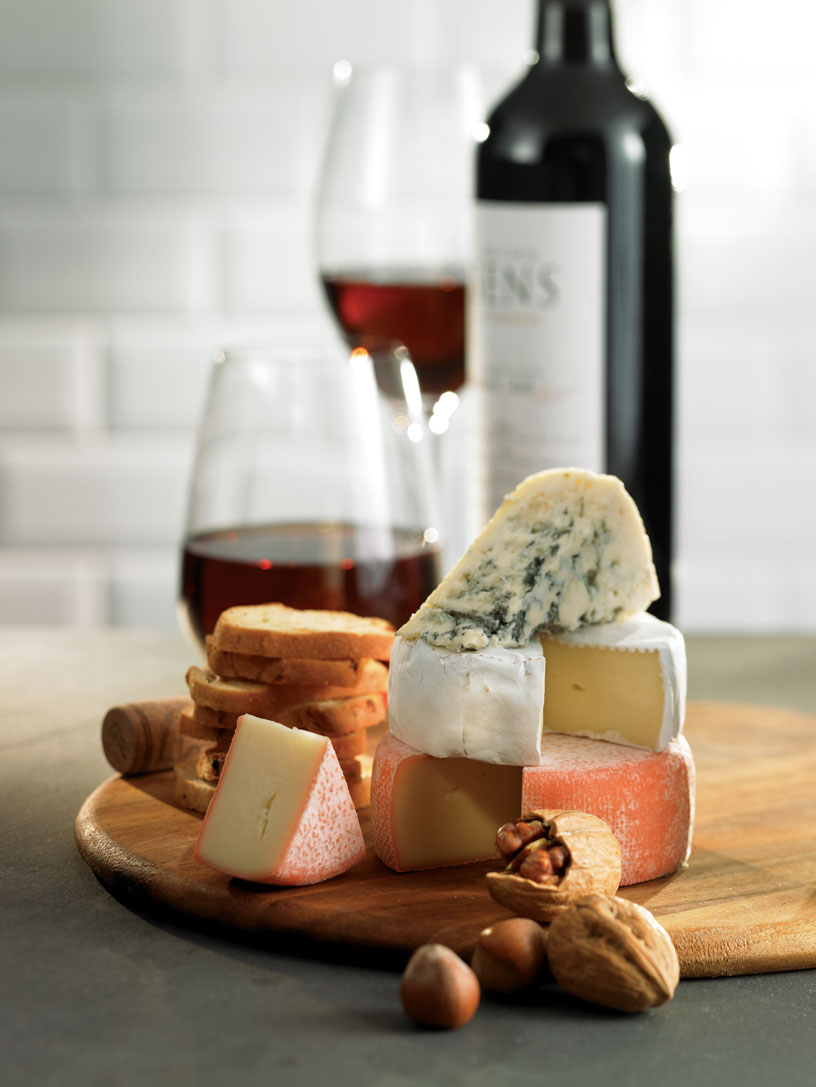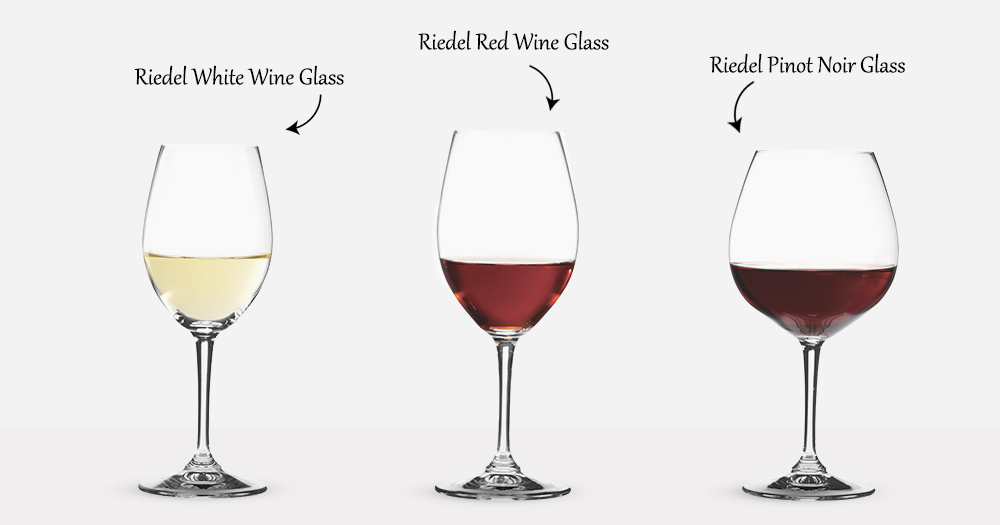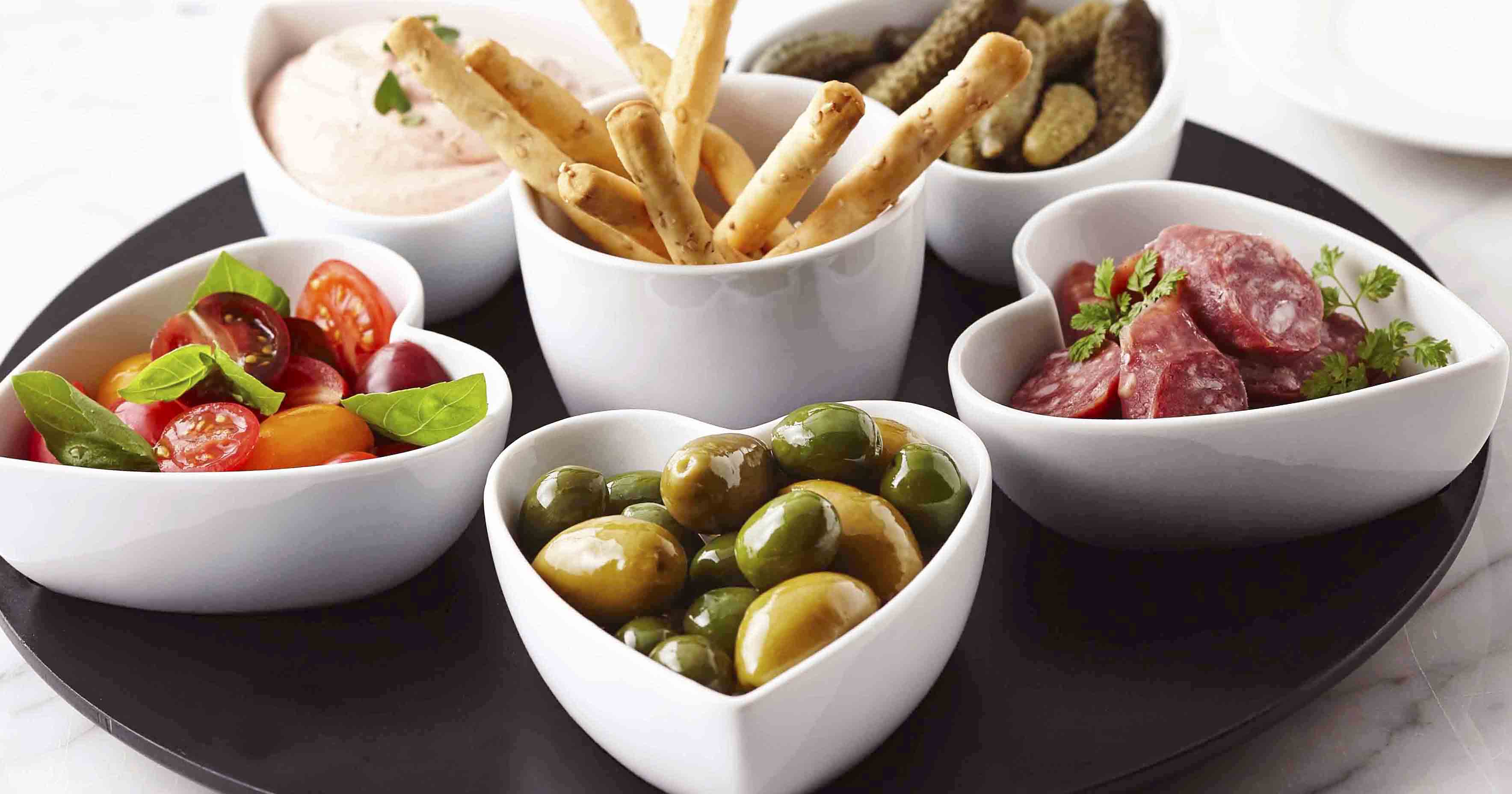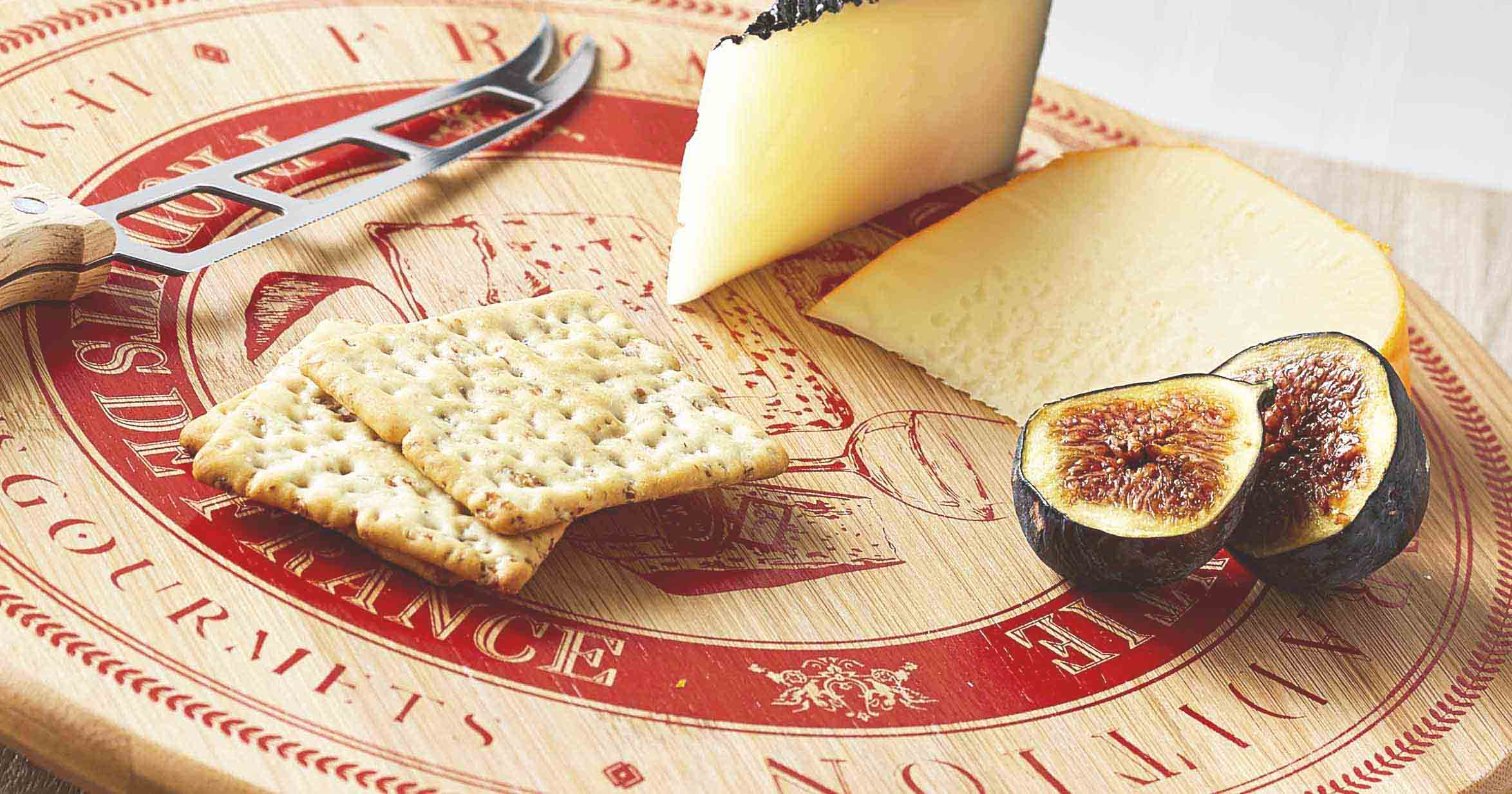
The season of family gatherings, holiday parties, and cozy nights watching holiday flicks with your loved ones is fast approaching.
Whether this inspires you to add an appetizer course to a night of entertaining, help you relax with a snack, get you planning the ultimate wine tasting event of the year, or to wind down after a successful day of taking advantage of our Shopping Party sale, knowing how to pair your wine and cheese, and getting your accompaniments just right, is part of any good host’s repertoire.
Step 1: Which wine?
How can you choose just one wine? Well, you don’t have to. The best way to learn about wines is to experience as many as possible and we urge you to do just that! However, if you want provide your guests with a specific wine, here are some ways you can narrow it down. If you and your guests are mostly beginners, the refreshing quality of most white wines often pleases the amateur palate. The unambiguous citrus, fruity, and floral flavors in a white wine allow a taster to pinpoint their likes and dislikes. A Chablis is very delicate and goes well with oysters. If you are looking for something local, ice wines are a specialty of the Niagra region in Ontario. Red wines can range from very light to more heavy and full-bodied. Choose a red wine, like a Cabernet, Shiraz, or Tempranillo, if you want to provide a wine with a more full-bodied experience for your tasters’ palates. In one glass of red wine, you can taste several different notes of flavor ranging from fruity, to spicy, and even vegetable and meaty tangs. A Pinot Noir would be a great selection for a group of experienced wine tasters. Guests who have developed an acquired taste for wines will enjoy the light taste and often complex taste profile of a pinot.

Let’s be honest, for most of us, whether a glass of wine offered in a mason jar or a regular cup we’ll accept it, no questions asked. However, having the right wine glass can help take your wine tasting to the next level. So if you have some options, note the following: white wines taste best in taller and smaller bowled glasses, most red wines do well in a full-bodied bowl, and a short-stemmed large bowled glass, suits a Pinot Noir. Our Riedel Glassware Collection, made in Germany, will do just the trick if you’re looking to get your hands on a new set.
Don’t forget to decant your wine if it needs it! Wines can have a funny smell to them at first due to the sulfur content. Avoid an awkward moment and let your wine live up to its full potential by decanting it in our Vignoble Wine Decanter.
Step 2: Choose your Cheese
When selecting the cheese you want in your spread, keep in mind that it’s hard to have an entire cheese spread go perfectly with one type of wine. If you’re looking to impress a friend who is a wine connoisseur, you might want to pair a single cheese to a solitary wine. Some classic pairings are brie with a pinot noir, Chèvre with a white wine and Boursin with a light red wine.

If a variety of cheese is what you crave, every good spread includes a soft cheese such as a cream cheese or Mascarpone, a semi-soft cheese such as a Havarti, a semi-hard cheese like Gouda or Edam, and a hard cheese such as Parmesan. Make sure your guests have no trouble serving themselves by providing them with the right utensils. Have a wide knife for cutting hard cheese, a thin knife will do for the semi-hard cheese, a pointed knife for the semi-soft and a two pronged knife for the fresh cheeses. Our Laguiole Cheese Set will serve you, and your guests, well.
Step 3: Complementary Accompaniments
What you choose to complement your wine and cheese can truly elevate your tasters’ experience. Crackers and slices of baguette make the perfect vehicle for your cheese. The saltiness of your bread and crackers is important to note. For example, Gouda goes well with salty crackers but a more briny cheese like cheddar goes well with a water cracker. Adding a charcuterie board to your spread is important if you want to make a meal out of your spread, but don’t let that stop you if you are planning an appetizer. For your cold cut meats, choosing different textures is a nice touch. Something sweet and soft like a pâté, a hard salami, with a prosciutto as a salty option balances well. Providing a cooked option like sausage or something wrapped in bacon is bound to impress.

For garnishes, olives and pickles are staples. Fruits such as grapes and figs can off-set all the savory options. Choose a tangy condiment like mustard to go with strong and hard cheeses or a jelly if you want to add sweet, spicy or peppery option. You can’t go wrong with a choice of apricot or cherry jelly which go great with Brie and Camembert cheese.
Step 4: Perfect Presentation

Get your presentation right by placing everything on a wood or marble cheese board such as our Cheshire Cheese board. Placing different shapes and sizes of cheese and meat together to makes it appealing to the eye. The cheese should be at room temperature and already sliced to avoid messy hassles. Next, be sure that none of the cheese are touching so that your guests can enjoy the unique flavors you have so carefully selected. Use multiple boards if necessary! Wine should be in a decanter to the side, along with the crackers, bread, and condiments.
Here to help you find the joy of entertaining this holiday season,

